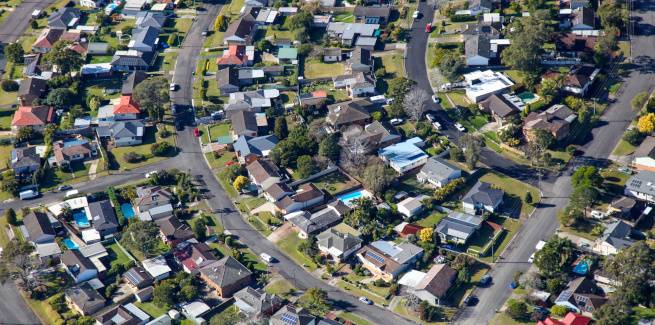In its analysis of data from the Australian Bureau of Statistics, property research group CoreLogic has observed that the value of total household assets fell 1.6 per cent to $12.6 trillion over the two quarters to December 2018.
The fall in the value of household assets coincided with a 1.5 per cent rise in the value of household liabilities, which totalled $2.4 trillion as at December 2018.
CoreLogic has assessed that, as a result, net household worth has fallen to the lowest level since September 2017, dropping to $10.2 trillion.
The property group also noted research from the Reserve Bank of Australia (RBA), which uses ABS data for its own analysis of the ratio of household debt to disposable income.
The RBA reported that as at December 2018, household debt rose to a record high of 189.6 per cent of disposable income, up from 188.7 per cent in the previous quarter.
Housing debt was also recorded at a record high of 140.2 per cent of disposable income, an increase from 139.5 per cent in the previous quarter.
CoreLogic research analyst Cameron Kusher observed that “while debt levels are quite high, the ratios of asset value to disposable income are much higher”.
“While that may be the case, it is important to understand that if asset values fall, the value of the debt typically doesn’t reduce at the same speed, which can lead to asset value erosion,” he said.
According to CoreLogic’s analysis, assets were 927.9 per cent of disposable incomes as at December 2018, declining from a peak of 962.1 per cent in December 2017 off the back of falls in dwelling values.
Accordingly, the ratio of housing assets to disposable income dropped from its peak of 529.7 per cent in December 2017 to 495.3 per cent, which CoreLogic assessed was the lowest since September 2016.
Mr Kusher added that as a result, the ratio of debt to assets is “climbing”, with total household debt jumping to 20.4 per cent of household assets, the highest it has been since March 2016, while total housing debt rose to 28.3 per cent of total housing assets, rising to its highest level since September 2014.
Mr Kusher said such trends has emerged off the back of the drop in property prices and out-of-cycle mortgage rate hikes from lenders.
“Despite generational low official interest rates, the measures of interest payments to disposable income have risen over recent quarters and likely reflective of lenders lifting interest rates independently of any adjustment to the cash rate by the RBA,” he said.
“Household interest payments represented 9.1 per cent of household disposable income in December 2018, their highest share since September 2013.
Housing interest payments accounted for 7.6 per cent of household disposable income in December 2018, their highest share since March 2013. “
He added: “Despite the cash rate tracking at generational lows, households are paying a proportionally higher share of interest than they have in many years.”
Mr Kusher expects the ratio of assets to disposable incomes to continue falling as housing market weakness persists.
“Although most households will likely remain in a position whereby the value of their assets is significantly higher than their debt, no doubt an increasing number of recent property purchasers will have higher levels of debt than the value of their asset.”
“This is probably an area of most concern for the RBA. If this leads to reduced consumer expenditure and, in turn, slower economic growth, it may be a trigger for either lower official interest rates or changes to mortgage lending policies (or both).”
He concluded: “Furthermore, with household debt at record highs and households dedicating more of their income to servicing their debt at a time when interest rates are so low, and if household debt levels haven’t declined by the time interest rates rise, it could create more challenges for households.”
[Related:: Spike in dwelling approvals splits opinion]
 ;
;
